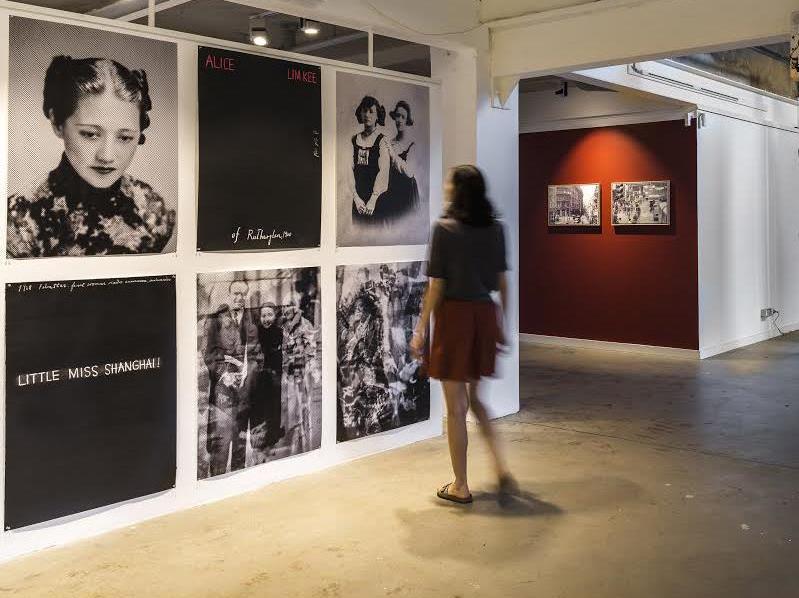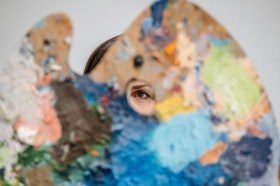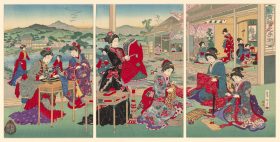Installation view of Modernity’s End: Half the Sky by John Young; Photo by Document Photography.
It’s often difficult for emerging and professional artists to find new audiences and augment interest in their art.
To help cover this unknown ground, we spoke with two practicing artists who have recently exhibited to see how it is done. From hiring your own space to applying for a mentor, they offered practical advice and tips for emerging artists.
Look beyond familiar areas
Site-specific artist Sarah Fitzgerald has experienced the benefits of exhibiting widely across Sydney. Now local to the North Shore, she previously lived in Paddington and currently studies at the National Art School in Darlinghurst. Exhibiting on both sides of the bridge has allowed her to expand her audience, she said.
‘You could have your work in the North somewhere in Willoughby like Incinerator Art Space, and then in the Inner West and you might have people that don’t necessarily go to both shows. So you’re reaching a much broader audience rather than just remaining confined to the people and places that you know.’
Exhibiting in different locations also helps get you out of your comfort zone. ‘It’s very easy to become comfortable within a particular network of artists that you show with and work with in a gallery. It’s nice to branch out a bit,’ said Fitzgerald.

Willoughby Visual Arts Biennial 2015; Photo by Ian Hobbs.
Contemporary artist Gary Shinfield agreed that looking outside of familiar areas is a great way to find new spaces to exhibit. But his last exhibition was in a familiar area, at the Art Space on The Concourse in Chatswood.
Shinfield’s previous success exhibiting at another space run by Willoughby Council made him pursue other exhibition opportunities the local council provides for artists. But in the end it was the venue that decided it for him. ‘It was the perfect setting,’ Shinfield explained.
‘I wanted to show a body of work, much of which was unframed, and the Art Space on The Concourse offered a very inviting clean lined, simple space that worked very well with unframed sheets of paper that I was working on.’
The professional feedback and input he received from the Council’s curatorial team, including advice on the installation, lighting and promotion of both exhibitions was another drawcard for Shinfield.
Put on your own show
Entering competitions and prizes is one way to seize new opportunities and get your work seen, but taking the leap and renting a space for your own show is a good alternative. For Shinfield, curating his own exhibitions through Willoughby Council was a great way to expand his audience.

Installation view of Private Practice of the Public Artist; Photo by Emilio Cresciani.
‘That way you can have control over the work that you are showing. But I am lucky in that I have always had a job with an income so I am able to finance those situations,’ Shinfield said.
‘I don’t want that pressure of having to sell to make a gallery owner happy. I just want to show work that might be non-commercial but it’s more important to me that I can show a body of work in completion. Some works are commercial, but generally many others aren’t and that’s why I like to rent a space.’
While renting a space may be financially unviable for some emerging artists, one way to offset the cost is to apply for artist’s grants, Shinfield suggested.
Fitzgerald also stressed the value of artist run initiatives in Sydney. Because there is no requirement to be signed by a gallery, you can be more proactive and choose the space that best suits your work and apply, explained Fitzgerald.
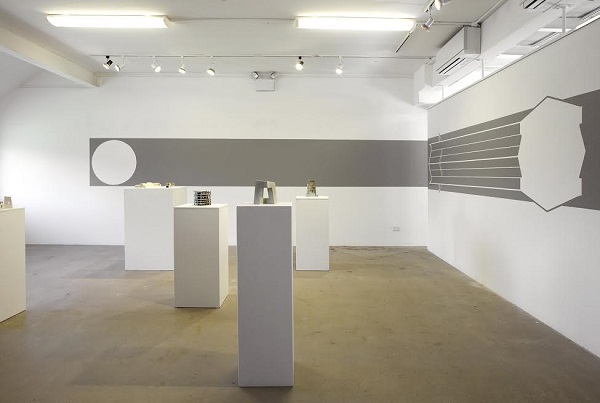
Installation view of Intersections: The art of architects; Photo by Document Photography.
‘A place like the Incinerator Art Space is really great because it has a mixture. It’s like an ARI half the time, you apply and the gallery manager gives you free reign. Then there are also few curated shows which is more like a traditional gallery, where you are invited to participate,’ said Fitzgerald.
Get a mentor
The value of a mentor shouldn’t be underestimated as these relationships can help shape and propel careers in the arts.As part of the inaugural Willoughby Visual Arts Biennial last year, curator Venita Poblocki paired an emerging artist with a more established artist.
Fitzgerald was mentored by renowned interdisciplinary artist Robyn Backen. They worked together to transform the Incinerator Art Space into an immersive and participatory environment where sound and projection captured the audiences movements.
‘We spent quite a lot of time in the space, and had meetings with Venita while we developed that exhibition. It was really nice to get insight into how these things work,’ said Fitzgerald.
‘It’s also great for emerging artists like me to be exposed to those established artists as well as being able to have shows there myself. Instead of being one or the other, the Incinerator sort of crosses both, which is interesting.’
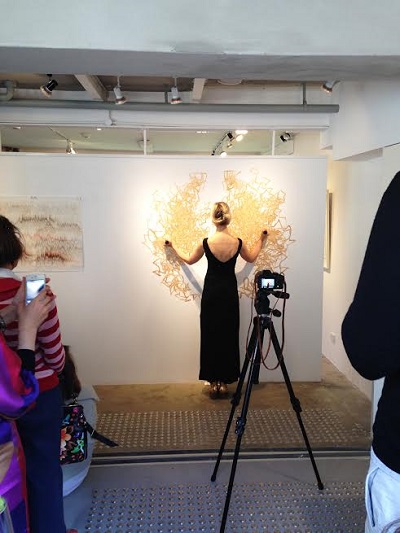
Performance by Phoebe Rathmell at The Space Between: Markmaking at Meditation Exhibition.
Incinerator Art Space and the Art Space on The Concourse are available for hire. Willoughby Council invites applications from artists, curators, arts groups and organisations to professionally display a range of exhibitions.
Submissions due June 3, 2016 and applicants will be notified by June 30, 2016.
For information about hiring the Incinerator Art Space, contact the Curator and Visual Arts Supervisor: 02 9777 7972 venita.poblocki@willoughby.nsw.gov.au.
For information about hiring the Art Space on The Concourse, contact Kathie Najar on 02 9777 7814 kathie.najar@willoughby.nsw.gov.au
